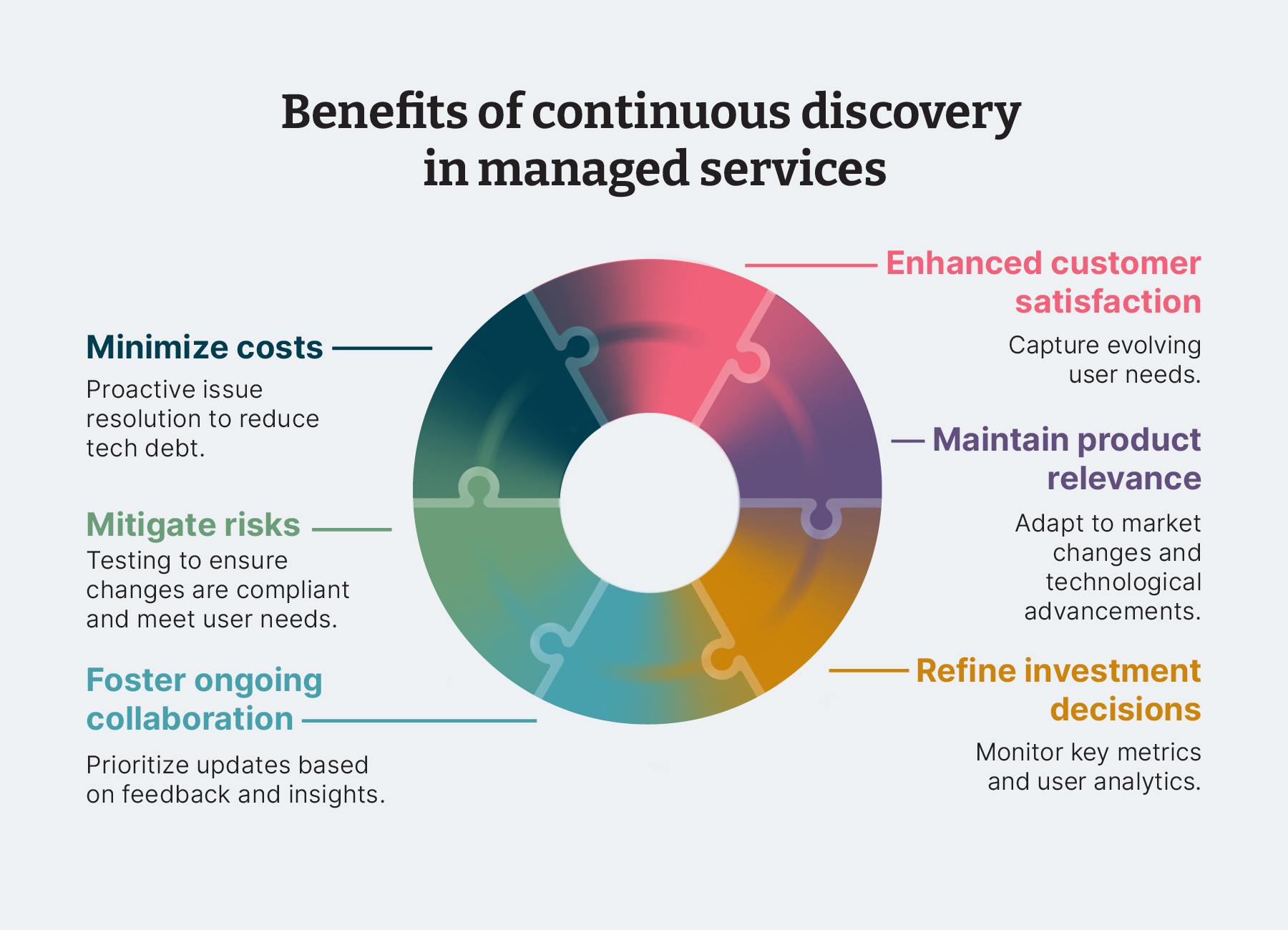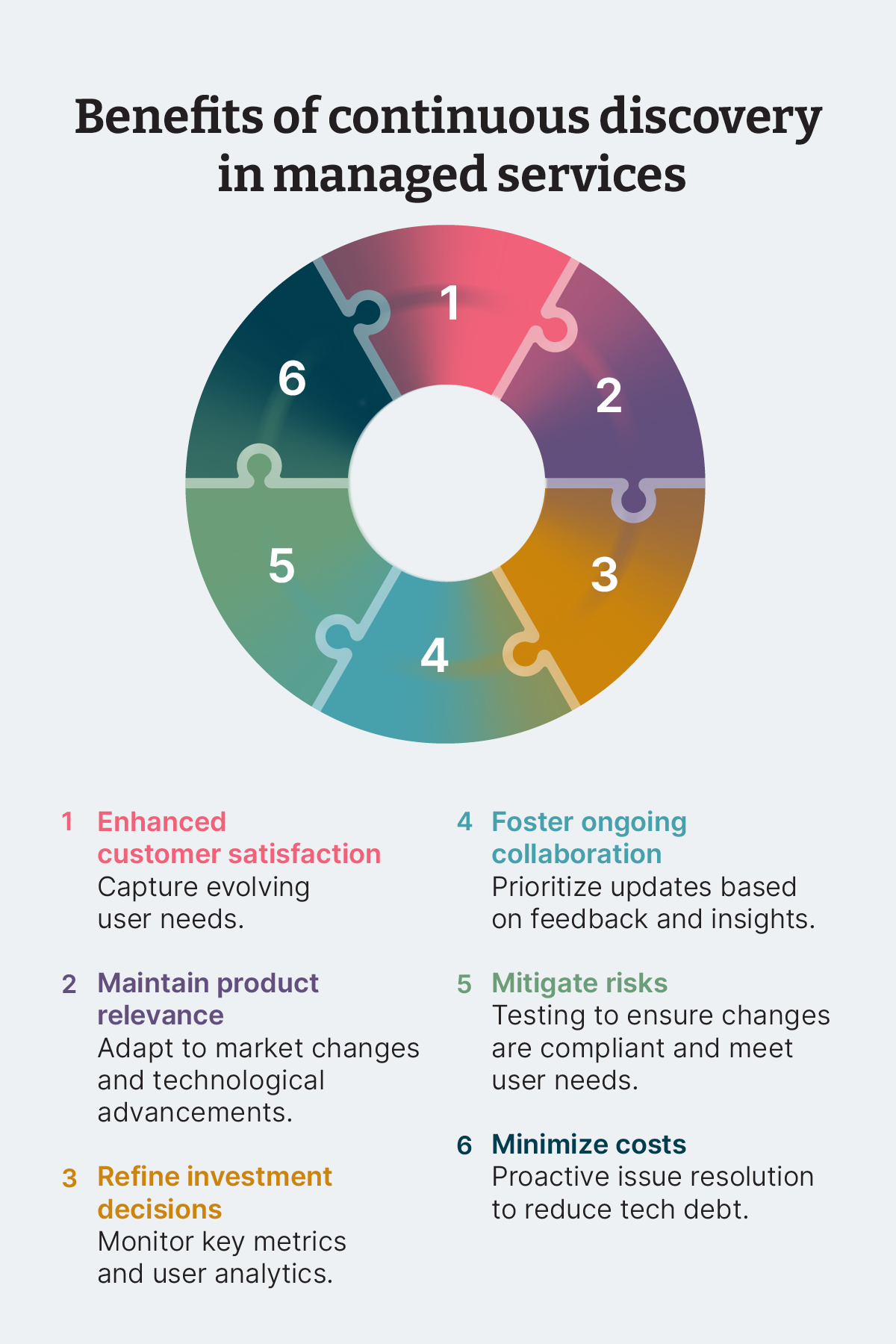Almost every business today has some degree of a technical debt problem. And, how that tech debt problem is managed has a direct impact on the business' ability to compete in today’s market. In fact, in a study involving more than 1,000 tech executives, nearly 70% of organizations saw technical debt as a primary barrier to innovation. It was also reported that tech debt accounts for 31% of IT budgets and demands 21% of IT resources for its management.
Traditional managed services apply a break-and-fix approach focused on ticket resolution and SLAs, adding to the tech debt problem. Once you’ve built up tech debt from focusing only on software patches that don’t address the root cause of an issue, you could find yourself dedicating three to four months to clean it up before you can actually invest in upgrading your digital assets — which typically occurs in uneven running periods.
So, how can you reduce tech debt and maintain code quality across your digital applications, enable innovation and be faster to market? Apply the principle of continuous discovery.
Continuous discovery for managed services
Continuous discovery involves an ongoing process of understanding, validating and prioritizing the needs of customers, users and the business through both qualitative and quantitative data-driven methods. Your digital products and applications are living, evolving things and users are central to shaping them. Discovery shouldn’t stop once your application is in run as it does in the traditional, reactive managed services model. It must continue in parallel, allowing you to integrate emergent findings and guide execution with timely insights that keep the product aligned to business and customer needs.
You can apply continuous discovery to maintenance by continuously monitoring application and user data, and leveraging those insights to predict and proactively identify iterative improvements that can be made to your applications over time.
It’s a complete mindset shift — rather than patching issues after they occur and waiting for that next big release, you’re constantly evolving and transforming your applications to improve the user experience and prevent issues from happening. Engaging in ongoing discovery in large IT environments with a suite of digital products also helps keep the development roadmap of each product in sync with the overall strategic direction and collective goals of the entire investment portfolio. The result? You’re able to maximize the efficiency, effectiveness and impact of your digital assets, maintain better code quality, and extend their lifespan.


The benefits of continuous discovery in managed services — in practice
Enhance customer satisfaction by providing teams with a mechanism for capturing evolving user needs. Continuous discovery in the context of managed services might look something like leveraging a centralized service operations center (SOC) — in broad terms, a product and platform operating model. This can provide an integrated perspective on the experiences of your customers, helping teams proactively tackle issues and make updates and changes according to user needs faster and more effectively.
Maintain product relevance using a steady stream of insights to respond to changing market dynamics, technological advancements and new business requirements. Using continuous discovery in managed services ensures that the software remains relevant, so when a major market shift occurs, you know how to change and adapt. For example, continuously monitoring the data from a store replenishment application gave an Italian grocery retailer the necessary insights to make investment decisions that would improve the availability of items.
Refine investment decisions by monitoring key product metrics and user analytics. This helps ensure that you’re always focusing on adding value. You can learn a lot from continuous discovery when launching a new product — you can learn even more when you’re using it in the context of one that’s already out there being used by your customers. It can help organizations maximize the value of what is already in place. For example, at a leading european retailer continuous monitoring of the merchandising application usage pattern led to sunsetting of legacy capabilities and channeling of funding to more relevant data driven decision making capabilities that focused on sales uplift.
Minimize costs by proactively finding and resolving issues before they occur, thereby maintaining code quality and reducing tech debt. Continuous discovery in managed services encourages you to be alive to possible technical debt in your systems. By constantly evaluating indicators available in IT service management (ITSM) tools, such as call data and error logs, you’re able to flag patterns and find the root cause of the issue. Addressing the root cause properly, rather than doing quick patches and allowing it to expand and become even more troublesome down the line, could potentially save you hundreds of millions of dollars.
Mitigate the risks of changes and updates through testing. Changes can add value — but they can also be detrimental, whether it’s undermining customer experience or falling foul of regulations. Using continuous discovery in managed services can help you de-risk potential changes and ensure that when you do make them they are not going to cause any damage. For example, in the life sciences industry, planning for maintenance updates while managing new user requirements is complex. A comprehensive view on data generated by applications and users, as well as enterprise requirements allows you to prioritize investments, release more frequently, promote continuous compliance and minimize any change and testing impact to the end users.
Foster a culture of ongoing collaboration in maintenance mode to collect feedback, identify opportunities for improvement and prioritize updates based on user, business and technological insights — as opposed to spikes of discovery or no discovery at all. Managed service suppliers can help with this using continuous discovery to help you remain up to date with everything needed from a regulatory, technology and customer perspective. This is particularly valuable for large, highly regulated institutions like banks that would otherwise be responsible for managing large technology estates on-premises. It’s also important in the payments industry; continuous discovery is critical in ensuring fraud mitigation systems are always up to speed, keeping customers’ money safe.
Implementing continuous discovery
Thoughtworks has a long history of using continuous discovery to amplify the voice of the customer and make product decisions. Through diligent research, practical learning and systematic experimentation, we delve deeply into understanding customer needs, enabling us to make informed, data-driven decisions.
We helped minden.ai build and manage the yuu Rewards Club platform in Singapore. The result? The platform was No.1 on the App Store and Google Play Store within one month and had over one million members within 100 days.
Our AI-Powered DAMO™ Managed Services solution embraces our commitment to continuous discovery and leverages insights from AI to evolve and transform your applications iteratively over time.
Read the next article in this series: Five strategies to maximize the value of your digital assets.



















